The 2019 Report presents in an integrated manner the impact of PSE on the economy and the market, the natural environment, as well as society and employees.
The report was prepared in compliance with the IIRC Guidelines and GRI Standards.
GRI 102-54
PSE’s impact on the Polish economy in 2019

PLN 2.75 bn
value added

2,436
jobs

more than
PLN 203 m
wages

more than
PLN 2 bn
value added

7 807
jobs

more than
PLN 346 m
wages

PLN 619 m
value added

3,184
jobs

more than
PLN 117 m
wages
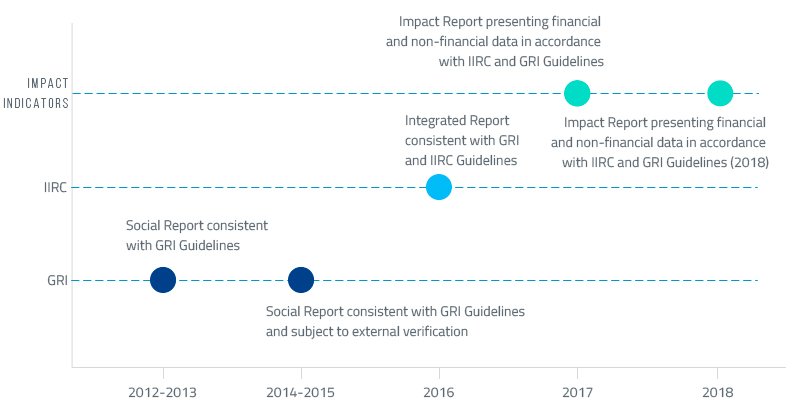
Selection of issues for the report
- an analysis of our company’s responsibility to the economy and the market, society and the natural environment,
- a review of challenges for the power sector,
- an analysis of foreign and domestic energy companies’ reporting trends,
- the standards adopted by PSE for integrated reporting,
- a review of the issues reported so far,
- an analysis of key impact indicators, GRIs, and PSE’s own indicators,
- a review of documents defining business challenges in the context of sustainable development – Sustainable Development Goals,
- analysis of internal documents.
GRI 102-42
GRI 102-43
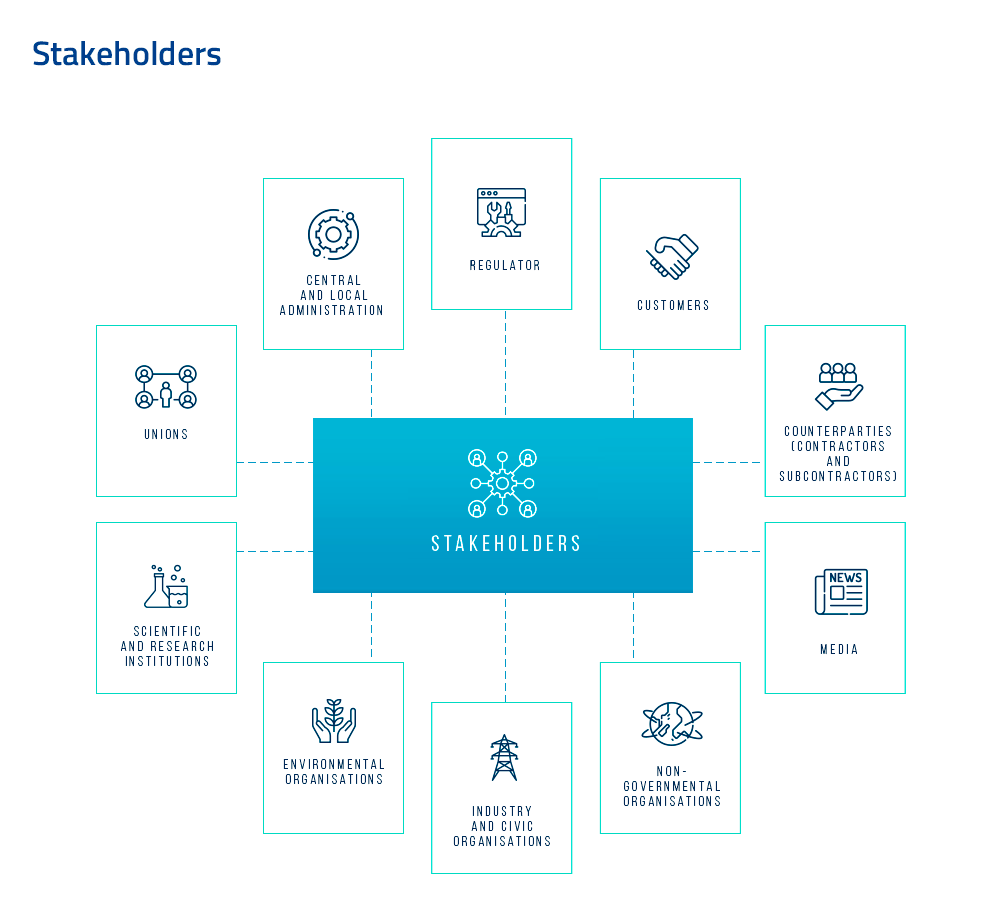
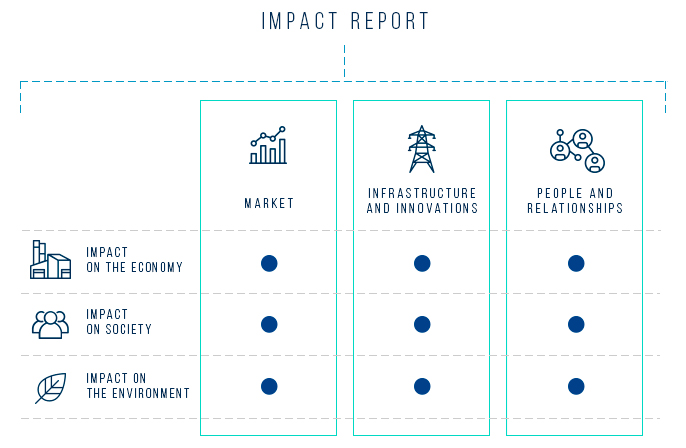
Materiality Matrix
- to the market,
- at the workplace,
- to society,
- to the natural environment.
5
4
MATERIALITY FOR THE ORGANISATION
3
Long-term security of electricity supply (preventing the blackout risk) – implementing the capacity market and supporting tools
Transmission system development plan
Requirements and standards of cooperation with contractors and subcontractors (new method of contracting – implementation of the Contractor Qualification System)
Structure of the power system in Poland and the role of PSE
Strengthening innovation and implementing new technologies
Representing the interests of the national electricity market in the European electricity market
Focus on solutions aimed at adjusting the Polish Power System to the new design of the markets and new technologies (including the energy storage methods, e-mobility, distributed generation – energy from RES)
Improvement of the new model of infrastructure project implementation
Management of the regulatory risk arising from provisions of the Clean Energy Package for All Europeans (substantive support to government administration)
Management of the risk of infrastructure unavailability, including critical infrastructure assets
PSE CG Cybersecurity Programme
Adaptive capacity of the Company: know-how, structures and internal procedures prepared for quick legislative changes taking place in the energy market, and the technical and organisational requirements of new solutions
Winning social acceptance for line routes (including the acquisition of transmission easement) and social communication around investment projects
Minimising the negative social impact of projects being implemented (noise, interference with the landscape)
Promoting energy security knowledge and implemented educational programmes
Responsibility to the natural environment in project implementation, minimising impact on the natural environment in PSE's operations, including preservation of biodiversity in investment project implementation areas.
2
MATERIALITY FOR THE ENVIRONMENT
3,5
5
Long-term security of electricity supply (preventing the blackout risk) – implementing the capacity market and supporting tools
Transmission system development plan
Requirements and standards of cooperation with contractors and subcontractors (new method of contracting – implementation of the Contractor Qualification System)
Structure of the power system in Poland and the role of PSE
Strengthening innovation and implementing new technologies
Representing the interests of the national electricity market in the European electricity market
Focus on solutions aimed at adjusting the Polish Power System to the new design of the markets and new technologies (including the energy storage methods, e-mobility, distributed generation – energy from RES)
Improvement of the new model of infrastructure project implementation
Management of the regulatory risk arising from provisions of the Clean Energy Package for All Europeans (substantive support to government administration)
Management of the risk of infrastructure unavailability, including critical infrastructure assets
PSE CG Cybersecurity Programme
Adaptive capacity of the Company: know-how, structures and internal procedures prepared for quick legislative changes taking place in the energy market, and the technical and organisational requirements of new solutions
Winning social acceptance for line routes (including the acquisition of transmission easement) and social communication around investment projects
Minimising the negative social impact of projects being implemented (noise, interference with the landscape)
Promoting energy security knowledge and implemented educational programmes
Responsibility to the natural environment in project implementation, minimising impact on the natural environment in PSE's operations, including preservation of biodiversity in investment project implementation areas.
The colors reflect the areas:
Market
Workplace
Society
Natural environmental
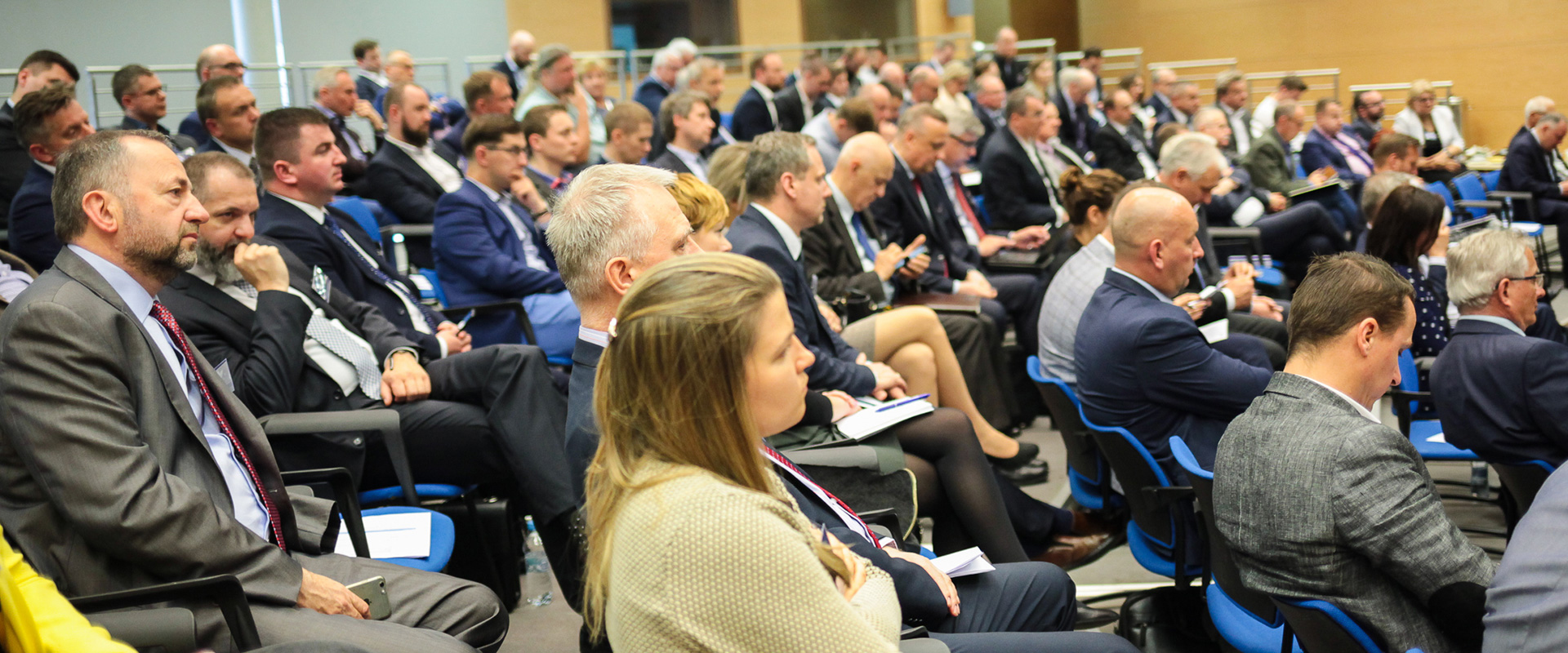
| Responsibility to the market | ||
|---|---|---|
| 1 | Long-term security of electricity supply (preventing the blackout risk) – implementing the capacity market and supporting tools | |
| 2 | Transmission system development plan | |
| 3 | Requirements and standards of cooperation with contractors and subcontractors (new method of contracting – implementation of the Contractor Qualification System) | |
| 4 | Structure of the power system in Poland and the role of PSE | |
| 5 | Strengthening innovation and implementing new technologies | |
| 6 | Representing the interests of the national electricity market in the European electricity market | |
| 7 | Focus on solutions aimed at adjusting the Polish Power System to the new design of the markets and new technologies (including the energy storage methods, e-mobility, distributed generation – energy from RES) | |
| 8 | Improvement of the new model of infrastructure project implementation | |
| 9 | Management of the regulatory risk arising from provisions of the Clean Energy Package for All Europeans (substantive support to government administration) | |
| 10 | Management of the risk of infrastructure unavailability, including critical infrastructure assets | |
| 11 | PSE CG Cybersecurity Programme | |
| Responsibility at the workplace | ||
| 12 | Adaptive capacity of the Company: know-how, structures and internal procedures prepared for quick legislative changes taking place in the energy market, and the technical and organisational requirements of new solutions | |
| Responsibility to society | ||
| 13 | Winning social acceptance for line routes (including the acquisition of transmission easement) and social communication around investment projects | |
| 14 | Minimising the negative social impact of projects being implemented (noise, interference with the landscape) | |
| 15 | Promoting energy security knowledge and implemented educational programmes | |
| Responsibility to the natural environment | ||
| 16 | Responsibility to the natural environment in project implementation, minimising impact on the natural environment in PSE's operations, including preservation of biodiversity in investment project implementation areas. | |
GRI 103-1 GRI 102-44
| Topics defined as material | Topics covered by GRI standards | Impact of topic within the organisation | Impact of topic outside the organisation |
|---|---|---|---|
| Responsibility to the market | |||
| Long-term security of electricity supply (preventing the blackout risk) – implementing the capacity market and supporting tools* | Indirect economic impact | PSE S.A. | In particular material to customers |
| Transmission system development plan | Strategy | PSE S.A. | In particular material to suppliers, customers, contractors and subcontractors |
| Requirements and standards of relationship with contractors and subcontractors (new method of contracting – implementation of the Contractor Qualification System) | Procurement practices | PSE S.A. | In particular material to contractors and subcontractors |
| Structure of the power system in Poland and PSE's role* | Organisation profile Economic performance |
PSE S.A. | In particular material to customers |
| Strengthening innovation and implementing new technologies | Strategy | PSE S.A. | In particular material to customers |
| Representing the interests of the national electricity market in the European electricity market | - | PSE S.A. | In particular material to owner and participants of the electricity market |
| Focus on solutions aimed at adjusting the Polish Power System to the new design of the markets and new technologies (including the energy storage methods, e-mobility, distributed generation – energy from RES) | Strategy | PSE S.A. | In particular material to the owner and participants of the electricity market as well as RES, environmental and social organisations |
| Improving the new infrastructure investment implementation model* | Strategy | PSE S.A. | In particular material to contractors, subcontractors and suppliers |
| Management of the regulatory risk arising from provisions of the Clean Energy Package for All Europeans (substantive support to government administration) | - | PSE S.A. | In particular material to owner and participants of the electricity market |
| Management of the risk of infrastructure unavailability, including critical infrastructure assets* | - | PSE S.A. | In particular material to customers |
| PSE CG Cybersecurity Programme | - | PSE S.A. | In particular material to owner and participants of the electricity market |
| Responsibility at the workplace | |||
| Adaptive capacity of the Company: know-how, structures and internal procedures prepared for quick legislative changes taking place in the energy market, and the technical and organisational requirements of new solutions. | Employment Regulatory compliance |
PSE S.A. | In particular material to potential employeesand the regulator |
| Responsibility to society | |||
| Winning social acceptance for line routes (including the acquisition of transmission easement) and social communication around investment projects | Local community | PSE S.A. | In particular material to local communities |
| Minimising the negative social impact of projects being implemented (noise, interference with the landscape | Local community | PSE S.A. | In particular material to local communities |
| Promoting energy security knowledge and implemented educational programmes | Indirect economic impact | PSE S.A. | In particular material to local communities |
| Responsibility to the natural environment | |||
| Responsibility to the natural environment in project implementation, minimising impact on the natural environment in PSE's operations, including preservation of biodiversity in investment project implementation areas. | Compliance with environmental regulations Environmental assessment of suppliers |
PSE S.A. | In particular material to local communities |
- Climate challenges and measures taken by PSE in this area;
- PSE’s activities during the COVID-19 pandemic;
- The circular economy;
- PSE’s approach to risk management.
GRI 102-11
GRI 102-56
